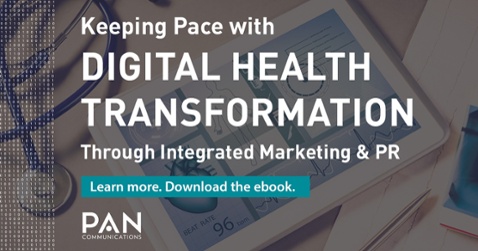A Peek Inside the Mind of the Modern Pharma Marketer

I had the pleasure of attending the recent Digital Health Coalition Summit, during which industry leaders discussed the latest trends shaping the Pharma industry and the challenges facing pharmaceutical marketers today. One overarching theme that wove its way into most discussions was the need to put the patient at the center of all decisions.

Want more on integrated marketing for healthcare brands? Read, ‘Implementing an Integrated Marketing and PR Strategy for Healthcare Brands’.
Below is a snapshot of additional trends that emerged from event panels:
- Security and Data Protection: GDPR and recent revelations surrounding alleged misuse of personal data by Facebook have made headlines for months. Will these stories influence how healthcare consumers search online and use apps? Probably not, but pharma marketers have a responsibility to be good data stewards regardless. So what does that mean? According to Tiffany Mura, founder of bizprox, the four pillars of good data stewardship include: compliance, transparency, value delivery and sensitivity. Pharma marketers can practice good stewardship by leveraging a multi-disciplinary team that includes the perspectives from legal and compliance. It’s also crucial to clearly articulate why your company collects data – to provide clear content that is helpful to the consumer.
- Impact of New Technologies on Pharma Marketing:
- Artificial Intelligence (AI): As healthcare organizations look to the promise of AI, how can it assist pharma marketers in delivering useful content to audiences? Capabilities including: cognitive conversations, intelligent automation, predictive modeling and content analysis – which all can provide pharma marketers with a better sense of how consumers are talking about their brand. AI helps put humans at the center of decisions by providing better insight into the patient.
- Automated Reality (AR) and Virtual Reality (VR): Pharma marketers can leverage AR/VR to help patients better understand complex diseases and diagnoses. For example, companies such as Klick Health provide virtual renderings of a patient’s body to understand how their personalized disease state might be impacting a given area. This extra level of context might also make it easier for patients to grasp how a treatment will work, potentially even increasing adherence.
- Voice Assistants: More and more consumers are adopting voice assistants such as Alexa and Google Home. As they become more prevalent, it’s important that pharma marketers adapt their paid strategy accordingly. It’s time to think about what paid could look like for voice. According to Robb Hecht, adjunct marketing professor at Baruch College, voice assistants are “the true first interactive tool in the home that provides brands the capability to dynamically offer up ads in the future that could be user controlled.” Given the need for hyper-personalization in pharmaceutical marketing, this could be an increasingly important vehicle for brands to reach their key audiences moving forward.
Are you a pharmaceutical or healthcare marketer thinking about how these digital health trends and technologies stand to impact your strategy for the rest of 2018 and beyond? Download our free eBook, “Keeping Pace with Digital Health Transformation Through Integrated Marketing & PR,” or email us with any questions!
